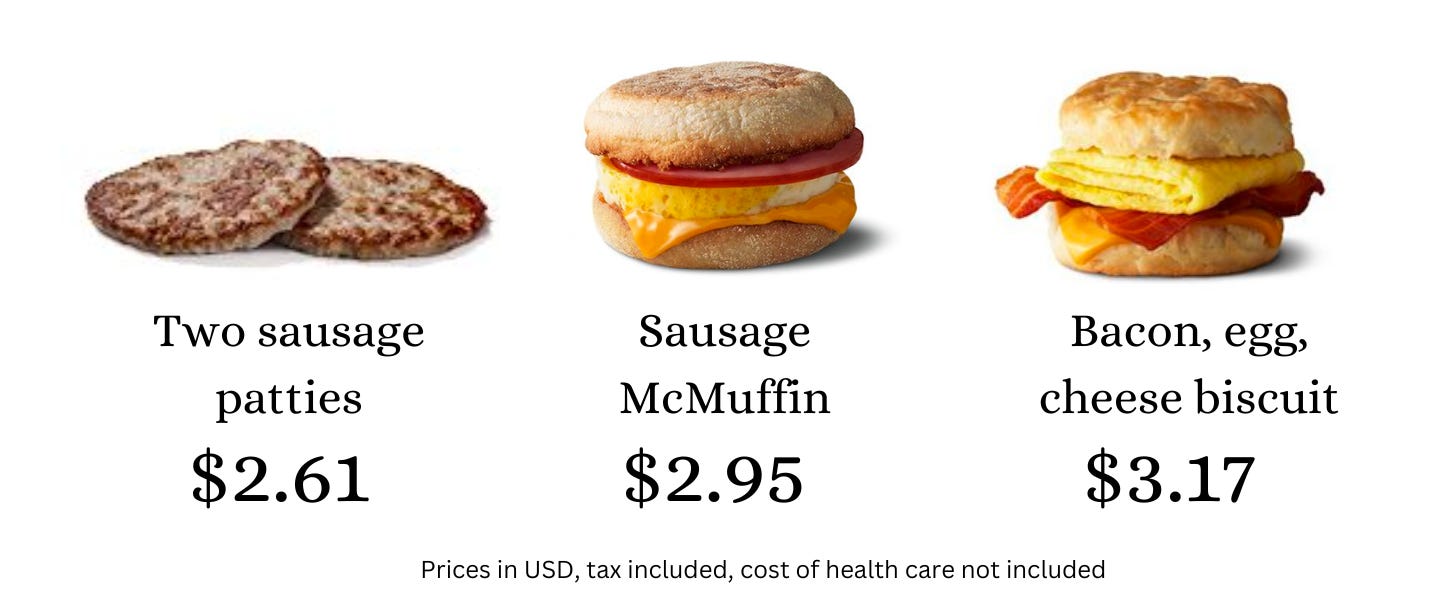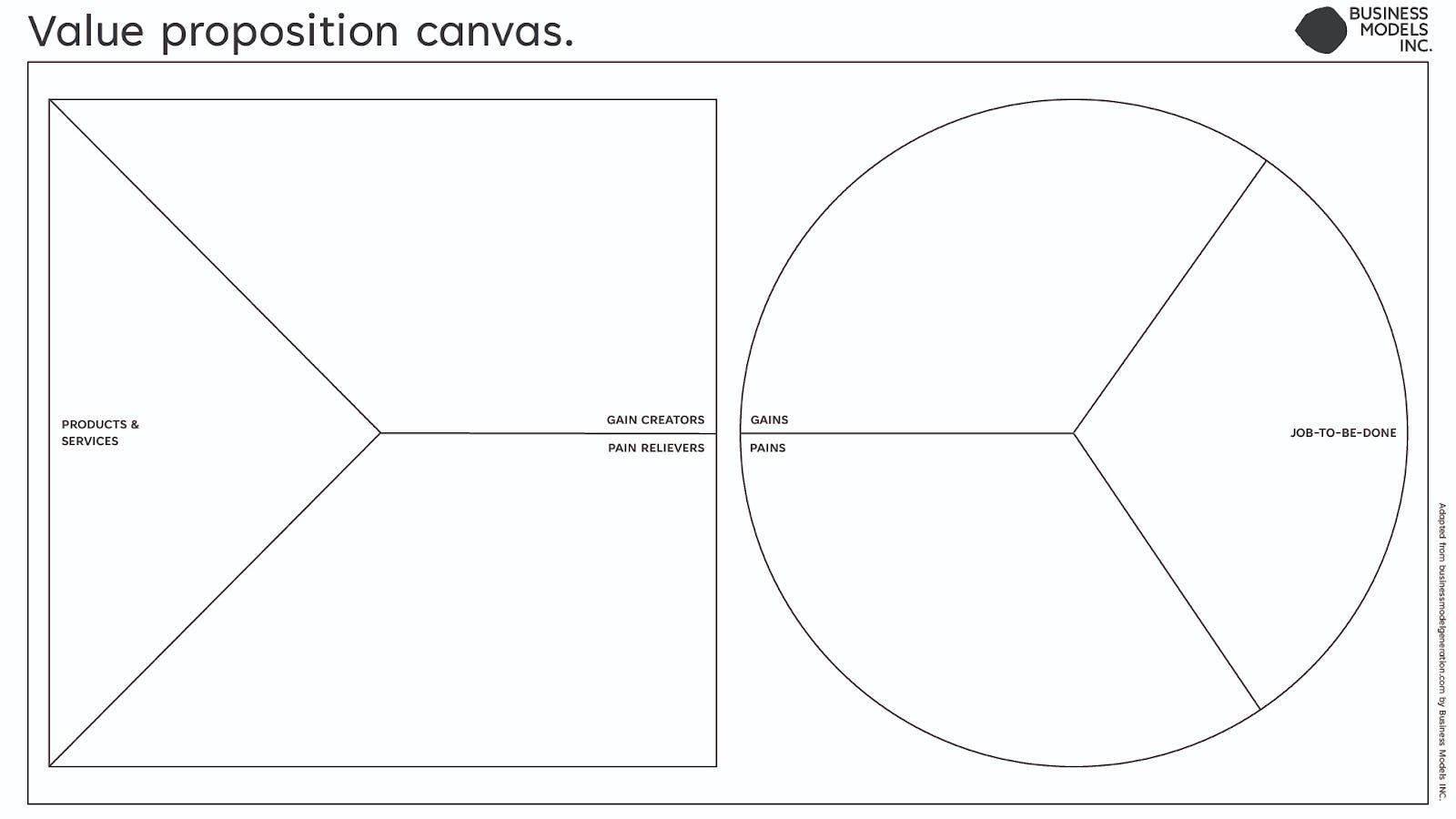Every morning Warren Buffet eats one of three things from the McDonald’s drive thru:

This is the behaviour of a dedicated McDonald’s customer! You could say, an ideal customer.
But that doesn’t mean billionaires fit the ideal customer profile of McDonald’s.
I use this example whenever I come across a startup that can’t decide who it should be targeting.
This happens a lot in seed-stage startups who probably had a clear idea of who they wanted to target in the beginning. But now they have early customers and the data is confusing. The ideal users are not behaving ideally and there are unexpected people buying.
This is not uncommon before finding product-market fit.
Most founders feel uncomfortable excluding any customers. After all, it’s not easy getting a single customer.
“But they’re already buying!”
Thanks for reading A Leap of Faith, a newsletter about pitching, founder storytelling, and other things.
Who cares? Literally.
I wrote about this in one of my first posts called “Start With The Problem.”
It’s impossible to tell a good story without identifying who has the problem. Otherwise there’s no hook. The problem becomes theoretical, not visceral. Here’s how it can hurt your story.
Product - Without a clear customer in mind you won’t know what features to show or when to stop talking. This describes most startup demos.
Competition - Let’s say you picked lower price as one of your competitive advantages. It’s only advantageous if your ideal customer cares about price. Warren Buffet cares but only in the sense that billionaires think price is a cute concept at breakfast.
Team - You can only tell if a team is great if you know what market they’re in, i.e. what game they’re playing. The best hockey team wouldn’t last a day in the Tour de France (and vice versa).
Common mistakes
Opposites
Your customer segmentation shouldn’t say you’re a premium product and still cheaper than the alternatives. These are opposites. It rarely work because higher price itself is a positive signal to a premium buyer, not to mention the higher costs of making something actually better.
What does your ideal customer truly care about?
Spray and Pray
It’s ok to have more than one picture of a user on your Problem slide. Or to mention multiple types of users who could benefit from your product. But challenge yourself to pick one or two users to focus on. Instead of saying “all these types of users could buy our product,” say “this is our ideal customer” (and stop).
I love when investors say, “but couldn’t these others users also buy your product?” Yes they can.
30,000 foot
I like pictures on Problem slides because it makes whatever pains you’re solving emotional, not rational. Saying you target millennials is too high level. Paint a picture of how your ideal customer has a pain point so it’s clear how your solution fits.
Tools for Identifying Target Customers
The three most common tools for finding and refining your ideal customers are ideal customer profiles (ICP), buyer personas, and the value proposition canvas.
Ideal Customer Profile
I hear ICP mentioned by founders the most so the term is well known in startup circles. If you’re interested in learning more about ICP this Gartner article is a good place to start.
Developing an ideal customer profile is a way to identify attributes of customers that make them ideal buyers. The main focus is on characteristics that will convert targets into buyers, like size, location, budget etc.
The idea is to qualify potential customers so your sales team can target the best ones. So ICP is a good framework for B2B startups especially those using account-based marketing (ABM).
For earlier stage companies ICP is too focused on sales conversion. Before product-market fit the goal should be to empathize with customers before thinking of monetizing them.
Buyer Personas
Similar to an ideal customer profile, developing buyer personas involves creating fictional characters (personas) that allow you to capture the pains and characteristics of users.
There’s a fine line between fictional and “science fictional” though. You should make sure you haven’t created a persona that does not in fact exist. I recommend using a picture of a real person.
Shopify has a good overview of Buyer Personas and how much detail can go into creating them.
Being less focused on sales characteristics and more focused on people is a good thing. But buyer personas tend to be documents not frameworks. They’re great once they’re developed but they don’t necessarily guide you to recognizing the best customer segments.
Value Proposition Canvas
The value proposition canvas is the best tool for early stage startups in my view. It allows you to both discover and define ideal customers. If you’re using it right you should make and discard many different canvases before settling on one or two that make the most sense.

Here is an excellent step-by-step guide on how to build your own canvas.
Start on the right-hand side (the circle) by describing the pains, gains and jobs-to-be-done of your target customer. This shouldn’t just be a whiteboard exercise. Get out of the building and talk to real people. Your product features should not be jobs-to-be-done.
Then fill out the left-hand square with how you can relieve the pains and enhance the gains of your customers. These are benefits that lead to your final step, which is defining the product (and services) you could offer.
This is a great strategic planning tool for early stage startups beyond its value to help you focus on who has the problem you’re solving.
Focus
When asked what factor was most important to where he’s gotten in life Buffet said, “Focus.”
We can learn a lot from Warren Buffet (in many areas excluding diet).
Focus is key to a good story, and a good company.
Focus means getting to know your ideal customer and being willing to say this one customer segment is my ideal and is enough for me. Own that segment and grow that segment first.
Then, if a billionaire walks into your store, take their $3.17.


